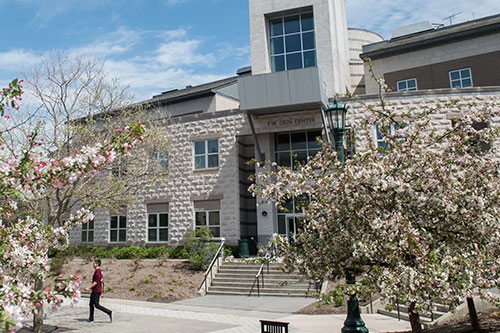Geosciences Department
- Agilent 8900 triple quadrupole ICP-MS (ICP-QQQ). For chemical analysis of aqueous solutions such as dissolved rocks or natural waters and Cetac LSX-213 laser ablation sampler (ICP Laser)
- Stable Isotope Mass Spectrometer Lab with Thermo Delta Advantage coupled to a Gas Bench II, Costech elemental analyzer, and Thermo TC/EA, and a Picarro L2140-i isotopic water analyzer capable of measurements of δ18O, δ17O, and δD in solids, liquids and vapor. The lab also houses a MicroMill and an analytical balance.
- Ion Chromatographs: Dionex ICS-2100 for anions, and a newer Thermo Scientific (~Dionex) Integrion RFIC for cations.
- Rigaku X-ray diffractometer.
- Bruker portable X-ray fluorescence analyzer
- Coulter laser diffraction particle size analyzer.
- Organic/inorganic carbon analyzer.
- MetrOhm auto-titrator for total alkalinity titrations
- General laboratory space including 7 fume hoods, electronic balances, 18 Mohm deionized water, autopipettes, drying ovens, high-temperature furnaces, crucibles, liquid and solid standard reference materials of various types, and other laboratory equipment.
- Conductivity meters, pH meters, dissolved oxygen meters, and related equipment for field water chemistry analyses.
- Soft sediment core analysis lab and coring equipment.
- Fission track analysis lab and related equipment.
- Davis Weather Station
- Sample preparation labs: slab saw, trim saw, thin section machines, diamond polishing laps, Frantz magnetic separator, Rogers table, steel jaw crusher, steel disk mill, shatterbox with tungsten carbide and aluminum oxide vessels, Rocklabs hydraulic crusher/splitter, Picotrace digestion system.
- Heavy liquid mineral separation setup.
- Laminar flow clean benches (one for sample separation, one for the ICP-MS).
- Student polarizing microscopes (16), Olympus transmitted and reflected light research microscopes (3), Olympus stereo zoom microscopes (2), student stereo microscopes (many), several digital microscope camera systems, index oils, refractometer, Cathodoluminescence stage.
- Petrog computer-controlled point count stage.
- Field equipment including Brunton compasses, altimeters, hand-held and base station GPS systems, ground resistivity, shallow 12-channel seismic refraction system, RF ground inductance, gravimeter, total field magnetometer.
- Sub-bottom and side-scan sonar.
- In addition the Geoscience Department is a major user of the interdisciplinary instrument facility that includes a scanning electron microscope Zeiss EVO-MA15 instrument.
